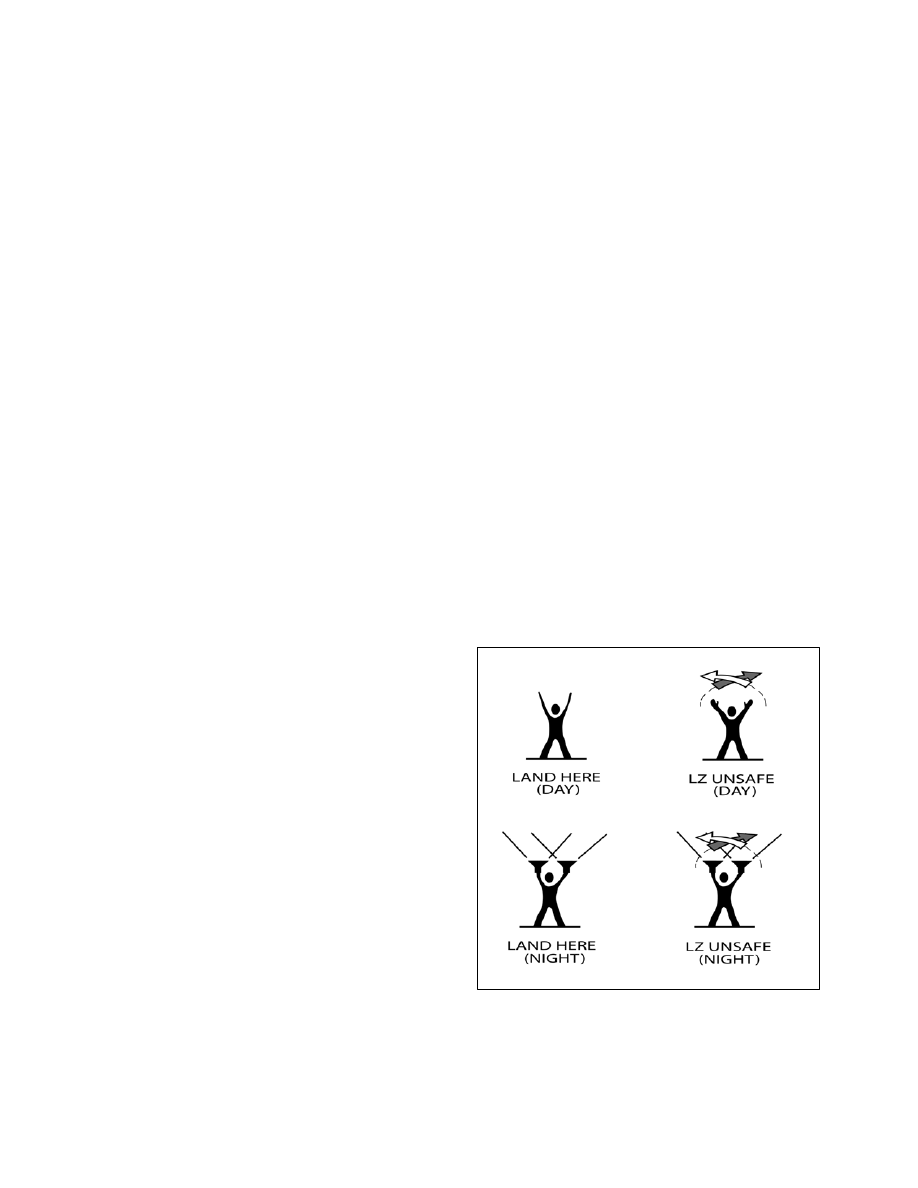
AIM
4/3/14
10−2−15
Special Operations
5.
The tail rotor poses a special threat to
working around a running helicopter. The tail rotor
turns many times faster than the main rotor, and is
often invisible even at idle engine power. Avoid
walking towards the tail of a helicopter beyond the
end of the cabin, unless specifically directed by the
crew.
NOTE
−
Helicopters typically have doors on the sides of the cabin,
but many use aft mounted “clamshell” type doors for
loading and unloading patients on litters or stretchers.
When using these doors, it is important to avoid moving any
further aft than necessary to operate the doors and
load/unload the patient. Again, always comply with the
crew’s instructions.
j. General Rules
1.
When working around helicopters, always
approach and depart from the front, never from the
rear. Approaching from the rear can increase your risk
of being struck by the tail rotor, which, when at
operating engine speed, is nearly invisible.
2.
To prevent injury or damage from the main
rotor, never raise anything over your head.
3.
If the helicopter landed on a slope, approach
and depart from the down slope side only.
4.
When the helicopter is loaded and ready for
take off, keep the departure path free of vehicles and
spectators. In an emergency, this area is needed to
execute a landing.
k. Hazardous Chemicals and Gases
1.
Responding to accidents involving hazardous
materials requires special handling by fire/rescue
units on the ground. Equally important are the
preparations and considerations for helicopter
operations in these areas.
2.
Hazardous materials of concern are those
which are toxic, poisonous, flammable, explosive,
irritating, or radioactive in nature. Helicopter
ambulance crews normally don’t carry protective
suits or breathing apparatuses to protect them from
hazardous materials.
3.
The helicopter ambulance crew must be told
of hazardous materials on the scene in order to avoid
the contamination of the crew. Patients/victims
contaminated by hazardous materials may require
special precautions in packaging before loading on
the aircraft for the medical crew’s protection, or may
be transported by other means.
4.
Hazardous chemicals and gases may be fatal
to the unprotected person if inhaled or absorbed
through the skin.
5.
Upon initial radio contact, the helicopter crew
must be made aware of any hazardous gases in the
area. Never assume that the crew has already been
informed. If the aircraft were to fly through the
hazardous gases, the crew could be poisoned and/or
the engines could develop mechanical problems.
6.
Poisonous or irritating gases may cling to a
victim’s clothing and go unnoticed until the patient is
loaded and the doors of the helicopter are closed. To
avoid possible compromise of the crew, all of these
patients must be decontaminated prior to loading.
l. Hand Signals
1.
If unable to make radio contact with the
HEMS pilot, use the following signals:
FIG 10
−2−8
Recommended Landing Zone Ground Signals